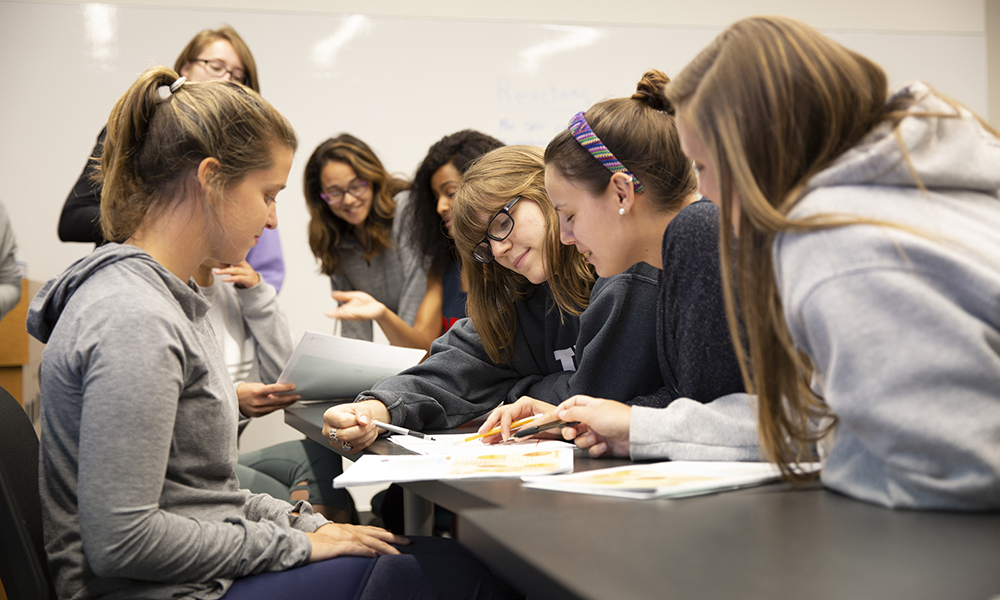Occupational therapy students attend ASIST workshop for suicide prevention
NewsBy: Shannon Shevlin
Creative Services Student Writer

Students in JMU’s occupational therapy (OT) program are passionate about promoting health, preventing illness and restoring independence in the lives of others. Yet, the field presents unique challenges for professionals who want to help others lead healthy and fulfilling lives
Occupational therapy professor Amy Russell Yun advocates a holistic approach to OT, stressing how mental health awareness, and more specifically, suicide prevention and awareness are crucial to an OT’s professional skillset.
Suicide prevention training in the OT program began in 2017, following discussions with OT students who were interested in learning more about how to help. One student reported meeting a patient during her pre-program observation hours, with hand and arm injuries from a suicide attempt. The patient received occupational therapy for his physical injuries, but later passed away from a completed suicide. The tragedy of this case, and many others like it, pose challenging questions to the OT field – what makes people stronger and healthier? How can an occupational therapist help them get there?
Russell Yun reminds us that occupational therapy is about more than mitigating physical pain and injuries; building emotional support and promoting holistic wellness are just as important. She says, “We want to give students the knowledge and skills they need to be effective. Listening skills, intervention strategies and tiers of help guidelines are all part of helping others realize wellness.” And while someone might be suffering from an arm injury, OT students are being trained to see the bigger picture.
Recently, second-year students of the program along with students in the School Counseling Program participated in a two-day intensive suicide prevention workshop known as Applied Suicide Intervention Skills Training (ASIST). The course teaches healthcare professionals how to recognize risk of suicide and how to intervene. Through informative presentations, group discussion and interactive role-play, students learn how to provide suicide first-aid.
Since its development in 1983, ASIST has trained more than one million individuals who have carried out more than 880,000 suicide interventions. Multiple peer-reviewed and government reports agree that the ASIST method is effective. After an ASIST intervention strategy is used, 35% of at-risk individuals feel more hopeful, 74% feel less suicidal and 46% feel less overwhelmed.
Charis Okada, a second-year OT student and participant in ASIST training, notes, “Anyone can get to that point. It was powerful to see how being a caregiver in that moment and making that individual feel safe can make all the difference for someone’s life.”
For many, the issue of suicide is too widespread, complex and uncomfortable to address. But, through prevention efforts and training like ASIST, we can dismantle an overwhelming issue like suicide by taking small steps toward progress. Russell responds, “Empowering students with the knowledge and skills they need to deal with these complex issues is what engagement is all about.”
September is suicide prevention month and everyone can make a difference in preventing suicide. Students are encouraged to explore the Counseling Center website to learn more about prevention and emergency services. Another resource is the JMU Suicide Prevention program headed by Jane Wiggins. The more people in the community who are familiar with suicide prevention and prepared to intervene, the more likely it is they will be able to identify risk and keep others safe.

